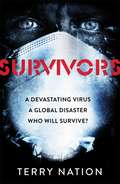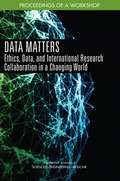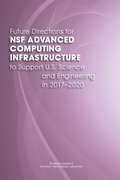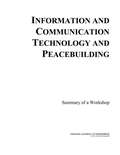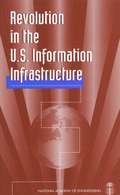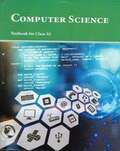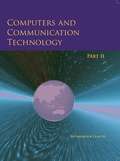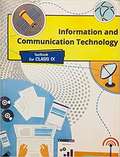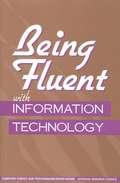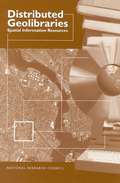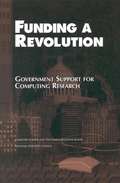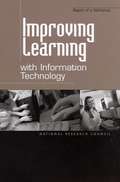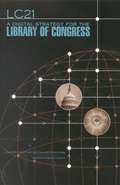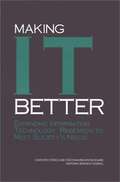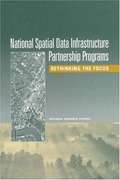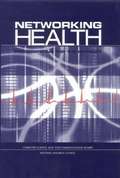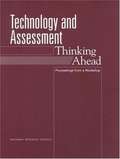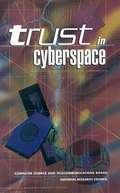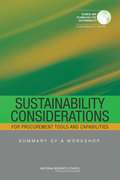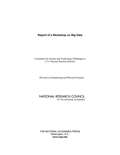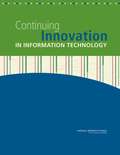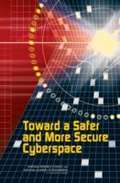- Table View
- List View
Survivors: The gripping, bestselling novel of life after a global pandemic
by Terry NationSurvivors of a global plague battle for life on an empty planet. A gripping vision of a post-apocalyptic world...'A fine piece of British post-apocalyptic fiction' 'Nation's novel is based on his original cult series...and is all the better for it, being far, far more gritty and realistic' SUNDAY SUNA virus has wiped out 95 per cent of the world's population in just a few weeks, leaving the remaining 5 per cent to stay alive in a world devoid of the most basic amenities - electricity, transport and medicine. The few survivors of the human race are forced to fall back on the most primitive skills in order to live and re-establish some semblance of law and order.Abby Grant, widowed by the plague, moves through this new dark age with determination, sustained by hope that her son, who fled his boarding school at the onset, has survived. She knows she must relearn the skills on which civilisation was built. With others, she founds a commune and the group return to the soil. But marauding bands threaten their existence. For Abby, there's a chance for a new life and love when she encounters James Garland, the fourteenth Earl of Woodhouse, who is engaged in a desperate fight to save his ancestral home. But more important, she must find her son.
List of The Informed Brain in a Digital World
by National Academies Keck Future InitiativeDigital media provide humans with more access to information than ever before-a computer, tablet, or smartphone can all be used to access data online and users frequently have more than one device. However, as humans continue to venture into the digital frontier, it remains to be known whether access to seemingly unlimited information is actually helping us learn and solve complex problems, or ultimately creating more difficulty and confusion for individuals and societies by offering content overload that is not always meaningful. Throughout history, technology has changed the way humans interact with the world. Improvements in tools, language, industrial machines, and now digital information technology have shaped our minds and societies. There has always been access to more information than humans can handle, but the difference now lies in the ubiquity of the Internet and digital technology, and the incredible speed with which anyone with a computer can access and participate in seemingly infinite information exchange. Humans now live in a world where mobile digital technology is everywhere, from the classroom and the doctor's office to public transportation and even the dinner table. This paradigm shift in technology comes with tremendous benefits and risks. Interdisciplinary Research (IDR) Teams at the 2012 National Academies Keck Futures Initiative Conference on The Informed Brain in the Digital World explored common rewards and dangers to Humans among various fields that are being greatly impacted by the Internet and the rapid evolution of digital technology. Keynote speaker Clifford Nass of Stanford University opened the dialogue by offering insight into what we already know about how the "information overload" of the digital world may be affecting our brains. Nass presented the idea of the "media budget," which states that when a new media emerges, it takes time away from other media in a daily time budget. When additional media appear and there is no time left in a person's daily media budget, people begin to "double book" media time. Personal computers, tablets, and smartphones make it easy to use several media simultaneously, and according to Nass, this double-booking of media can result in chronic multitasking, which effects how people store and manage memory. Although current fast-paced work and learning environments often encourage multitasking, research shows that such multitasking is inefficient, decreases productivity, and may hinder cognitive function. National Academies Keck Future Initiative: The Informed Brain in a Digital World summarizes the happenings of this conference.
Infusing Real World Experiences into Engineering Education
by National Academies of EngineeringThe aim of this report is to encourage enhanced richness and relevance of the undergraduate engineering education experience, and thus produce better-prepared and more globally competitive graduates, by providing practical guidance for incorporating real world experience in US engineering programs. The report, a collaborative effort of the National Academy of Engineering (NAE) and Advanced Micro Devices, Inc. (AMD), builds on two NAE reports on The Engineer of 2020 that cited the importance of grounding engineering education in real world experience. This project also aligns with other NAE efforts in engineering education, such as the Grand Challenges of Engineering, Changing the Conversation, and Frontiers of Engineering Education. This publication presents 29 programs that have successfully infused real world experiences into engineering or engineering technology undergraduate education. The Real World Engineering Education committee acknowledges the vision of AMD in supporting this project, which provides useful exemplars for institutions of higher education who seek model programs for infusing real world experiences in their programs. The NAE selection committee was impressed by the number of institutions committed to grounding their programs in real world experience and by the quality, creativity, and diversity of approaches reflected in the submissions. A call for nominations sent to engineering and engineering technology deans, chairs, and faculty yielded 95 high-quality submissions. Two conditions were required of the nominations: (1) an accredited 4-year undergraduate engineering or engineering technology program was the lead institutions, and (2) the nominated program started operation no later than the fall 2010 semester. Within these broad parameters, nominations ranged from those based on innovations within a single course to enhancements across an entire curriculum or institution. Infusing Real World Experiences into Engineering Education is intended to provide sufficient information to enable engineering and engineering technology faculty and administrators to assess and adapt effective, innovative models of programs to their own institution's objectives. Recognizing that change is rarely trivial, the project included a brief survey of selected engineering deans concern in the adoption of such programs.
Data Matters: Ethics, Data, And International Research Collaboration In A Changing World: Proceedings Of A Workshop
by National Academies of Sciences Engineering MedicineIn an increasingly interconnected world, perhaps it should come as no surprise that international collaboration in science and technology research is growing at a remarkable rate. As science and technology capabilities grow around the world, U.S.-based organizations are finding that international collaborations and partnerships provide unique opportunities to enhance research and training. International research agreements can serve many purposes, but data are always involved in these collaborations. The kinds of data in play within international research agreements varies widely and may range from financial and consumer data, to Earth and space data, to population behavior and health data, to specific project-generated data—this is just a narrow set of examples of research data but illustrates the breadth of possibilities. The uses of these data are various and require accounting for the effects of data access, use, and sharing on many different parties. Cultural, legal, policy, and technical concerns are also important determinants of what can be done in the realms of maintaining privacy, confidentiality, and security, and ethics is a lens through which the issues of data, data sharing, and research agreements can be viewed as well. A workshop held on March 14-16, 2018, in Washington, DC explored the changing opportunities and risks of data management and use across disciplinary domains. The third workshop in a series, participants gathered to examine advisory principles for consideration when developing international research agreements, in the pursuit of highlighting promising practices for sustaining and enabling international research collaborations at the highest ethical level possible. The intent of the workshop was to explore, through an ethical lens, the changing opportunities and risks associated with data management and use across disciplinary domains—all within the context of international research agreements. This publication summarizes the presentations and discussions from the workshop.
Future Directions for NSF Advanced Computing Infrastructure to Support U.S. Science and Engineering in 2017-2020
by National Academies of Sciences Engineering MedicineAdvanced computing capabilities are used to tackle a rapidly growing range of challenging science and engineering problems, many of which are compute- and data-intensive as well. Demand for advanced computing has been growing for all types and capabilities of systems, from large numbers of single commodity nodes to jobs requiring thousands of cores; for systems with fast interconnects; for systems with excellent data handling and management; and for an increasingly diverse set of applications that includes data analytics as well as modeling and simulation. Since the advent of its supercomputing centers, the National Science Foundation (NSF) has provided its researchers with state-of-the-art computing systems. The growth of new models of computing, including cloud computing and publically available by privately held data repositories, opens up new possibilities for NSF. In order to better understand the expanding and diverse requirements of the science and engineering community and the importance of a new broader range of advanced computing infrastructure, the NSF requested that the National Research Council carry out a study examining anticipated priorities and associated tradeoffs for advanced computing. Future Directions for NSF Advanced Computing Infrastructure to Support U.S. Science and Engineering in 2017-2020 provides a framework for future decision-making about NSF’s advanced computing strategy and programs. It offers recommendations aimed at achieving four broad goals: (1) position the U.S. for continued leadership in science and engineering, (2) ensure that resources meet community needs, (3) aid the scientific community in keeping up with the revolution in computing, and (4) sustain the infrastructure for advanced computing.
Information and Communication Technology and Peacebuilding: July 2008
by National Academy of Engineering of the National AcademiesThose who would use information and communication technology (ICT) in the cause of peace need to be cognizant of the risks as well as the benefits. ICT can facilitate positive dialogue but also hate speech. It can be used to fight corruption but also facilitate it. Simply giving people more information does not necessarily lead to predictable or positive results. As people become more informed, they may become more motivated to change their circumstances and to do so violently. On December 14, 2007, the National Academy of Engineering (NAE) convened a group of experts in diverse fields to consider the role of ICT in promoting peace and conflict resolution. The one-day workshop was designed to consider current and emerging technologies and strategies for employing them in conflict management and diplomacy. It also aimed to explore how organizations with a role in promoting peace, like the U.S. Institute of Peace, can most effectively leverage technology in carrying out their missions. Information and Communication Technology and Peacebuilding: Summary of a Workshop reviews the group’s discussions on number of key issues, illuminates certain practitioner needs, and suggests possible next steps.
Revolution in the U.S. Information Infrastructure
by National Academy of Engineering StaffWhile societies have always had information infrastructures, the power and reach of today's information technologies offer opportunities to transform work and family lives in an unprecedented fashion. This volume, a collection of six papers presented at the 1994 National Academy of Engineering Meeting Technical Session, presents a range of views on the subject of the revolution in the U.S. information infrastructure. The papers cover a variety of current issues including an overview of the technological developments driving the evolution of information infrastructures and where they will lead; the development of the Internet, particularly the government's role in its evolution; the impact of regulatory reform and antitrust enforcement on the telecommunications revolution; and perspectives from the computer, wireless, and satellite communications industries.
Computer Science class 11 - NCERT - 23
by National Council of Educational Research and TrainingThe NCERT Computer Science textbook for Class 11 aims to provide high school students with a foundational understanding of computer science and programming. The book starts with an introduction to what a computer is, its historical evolution, and its fundamental components. It covers hardware aspects like CPUs, memory, and I/O devices, as well as software elements including operating systems and application software. The textbook also delves into programming languages, offering a beginner's guide to algorithmic problem-solving and coding. It generally includes languages like Python or C++ to teach the basics of programming constructs like loops, conditional statements, and functions. Data representation and management are also discussed, offering insights into how data is stored and manipulated in a computer system. Networking fundamentals, including the basics of the internet and web technologies, are covered to help students understand how computers communicate. Security aspects, ethical computing, and emerging technologies are often included to give a rounded perspective. Overall, the textbook aims to be a comprehensive guide for students new to the realm of computer science.
Computers & Communication Technology Part 2 class 11 - NCERT
by National Council of Educational Research and TrainingPublished by the NCERT, the book Computers and Communication Technology part 2 for std 11 will help students understand the different basic concepts of computers, Java script, coding and the internet. Written in simple english language the book follows the guidelines of the CBSE board.
Information and Communication Technology (ICT) class 9 - NCERT - 23
by National Council of Educational Research and TrainingThe NCERT textbook "Information and Communication Technology" for Class IX provides a comprehensive overview of key concepts and principles in the field of ICT. Covering topics ranging from the basics of computer hardware and software to more advanced concepts such as networking, internet technologies, and cybersecurity, this textbook aims to equip students with the knowledge and skills needed to navigate the rapidly evolving digital landscape. Through engaging examples, illustrations, and practical exercises, students are encouraged to develop a deeper understanding of ICT and its applications in various domains. Emphasizing critical thinking and problem-solving skills, the textbook also highlights the ethical and societal implications of ICT, encouraging students to use technology responsibly and ethically. Overall, "Information and Communication Technology" serves as an invaluable resource for students seeking to develop a strong foundation in ICT and prepare for the digital challenges of the modern world.
ACCESS TO RESEARCH DATA IN THE 21ST CENTURY: An Ongoing Dialogue Among Interested Parties Report of a Workshop
by National Research Council"An enthralling, multilayered story. "--RT Book Reviews on Deliver Me From Darkness It's Forbidden for a Warrior of the Light to Love a Creature of the Dark. . . Valin has never quite fit in with the rest of the Paladin warriors. His power to manipulate shadow has always put him at odds with their purpose of using heavenly Light to eradicate evil. His warrior brothers have no idea how close he is to being lost to his dark nature. But Maybe He Was Never All That Light to Begin With. . . When Valin meets the vampire Gabriella, she awakens within him something he thought long buried. But as he watched Gabriella's need for vengeance to drag her down into the same dark hell that he's living, he knows his only chance at redemption is bringing her out of the dark. . . "Intriguing paranormal creatures and torment abound. . . the sex is great, and the ending is fun. "--Booklist on Deliver Me from Temptation
Being Fluent with Information Technology
by National Research CouncilComputers, communications, digital information, software—the constituents of the information age—are everywhere. Being computer literate, that is technically competent in two or three of today’s software applications, is not enough anymore. Individuals who want to realize the potential value of information technology (IT) in their everyday lives need to be computer fluent—able to use IT effectively today and to adapt to changes tomorrow.Being Fluent with Information Technology sets the standard for what everyone should know about IT in order to use it effectively now and in the future. It explores three kinds of knowledge—intellectual capabilities, foundational concepts, and skills—that are essential for fluency with IT. The book presents detailed descriptions and examples of current skills and timeless concepts and capabilities, which will be useful to individuals who use IT and to the instructors who teach them.
Distributed Geolibraries: Spatial Information Resources Summary of a Workshop
by National Research CouncilPresents the findings of the Workshop on Distributed Geolibraries: Spatial Information Resources, convened by the Mapping Science Committee of the National Research Council in June 1998
Funding a Revolution: Government Support for Computing Research
by National Research CouncilThe past 50 years have witnessed a revolution in computing and related communications technologies. The contributions of industry and university researchers to this revolution are manifest; less widely recognized is the major role the federal government played in launching the computing revolution and sustaining its momentum. Funding a Revolution examines the history of computing since World War II to elucidate the federal government's role in funding computing research, supporting the education of computer scientists and engineers, and equipping university research labs. It reviews the economic rationale for government support of research, characterizes federal support for computing research, and summarizes key historical advances in which government-sponsored research played an important role.Funding a Revolution contains a series of case studies in relational databases, the Internet, theoretical computer science, artificial intelligence, and virtual reality that demonstrate the complex interactions among government, universities, and industry that have driven the field. It offers a series of lessons that identify factors contributing to the success of the nation's computing enterprise and the government's role within it.
Improving Learning with Information Technology: Report of a Workshop
by National Research CouncilIn spring 2000, representatives from the U. S. Department of Education (DOEd) and senior staff at the National Research Council (NRC) recognized a common frustration: that the potential of information technology to transform K-12 education remains unrealized. In fall 2000 the U. S. DOEd formally requested that the National Academies undertake an interdisciplinary project called Improving Learning with Information Technology (ILIT). The project was launched with a symposium on January 24-25, 2001. This report summarizes the proceedings of the symposium and is intended for people interested in considering better strategies for using information technology in the educational arena. While it offers insights from the presenters on both the challenges to and the opportunities for forging a better dialogue among learning scientists, technologists, and educators, it does not contain conclusions or recommendations. Rather, it highlights issues to consider, constituents to engage, and strategies to employ in the effort to build a coalition to harness the power of information technologies for the improvement of American education. Every effort has been made to convey the speakers' content and viewpoints accurately. Recognizing the speculative nature of many of the speaker contributions, most attributions identify a speaker by area of expertise rather than by name. The report reflects the proceedings of the workshop and is not intended to be a comprehensive review of all the issues involved in the project to improve learning with information technology.
LC21: A Digital Strategy for the Library of Congress
by National Research CouncilDigital information and networks challenge the core practices of libraries, archives, and all organizations with intensive information management needs in many respects-not only in terms of accommodating digital information and technology, but also through the need to develop new economic and organizational models for managing information. LC21: A Digital Strategy for the Library of Congress discusses these challenges and provides recommendations for moving forward at the Library of Congress, the world's largest library. Topics covered in LC21 include digital collections, digital preservation, digital cataloging (metadata), strategic planning, human resources, and general management and budgetary issues. The book identifies and elaborates upon a clear theme for the Library of Congress that is applicable more generally: the digital age calls for much more collaboration and cooperation than in the past. LC21 demonstrates that information-intensive organizations will have to change in fundamental ways to survive and prosper in the digital age.
Making It Better: Expanding Information Technology Research To Meet Society's Needs
by National Research CouncilThe flood of information technology (I.T.) products and services entering the market place often obscures the need to nurture the research enterprise. But as I.T. becomes integrated into all aspects of society, the need for research is even greater. And the range of issues that need to be addressed is broader than ever.This new book highlights the fundamental importance of research to ensure that I.T. meets society's expanding needs. Against the background of dramatic change in the I.T. landscape, the committee examines four key questions: Is the scope of I.T. research broad enough-particularly in the arena of large-scale systems-to address government, business, and social applications? Are government and industrial sponsors providing sufficient funding for I.T. research? Is the research net big both big and diverse enough to capture sufficient financial and intellectual resources to advance the field? Are structures and mechanisms for funding and conducting research suited to the new sets of research challenges?
National Spatial Data Infrastructure Partnership Programs: Rethinking the Focus
by National Research CouncilThe National Academies Press (NAP)--publisher for the National Academies--publishes more than 200 books a year offering the most authoritative views, definitive information, and groundbreaking recommendations on a wide range of topics in science, engineering, and health. Our books are unique in that they are authored by the nation's leading experts in every scientific field.
Networking Health: Prescriptions for the Internet
by National Research CouncilConsumer health websites have garnered considerable media attention, but only begin to scratch the surface of the more pervasive transformations the Internet could bring to health and health care. Networking Health examines ways in which the Internet may become a routine part of health care delivery and payment, public health, health education, and biomedical research. Building upon a series of site visits, this book: Weighs the role of the Internet versus private networks in uses ranging from the transfer of medical images to providing video-based medical consultations at a distance.Reviews technical challenges in the areas of quality of service, security, reliability, and access, and looks at the potential utility of the next generation of online technologies.Discusses ways health care organizations can use the Internet to support their strategic interests and explores barriers to a broader deployment of the Internet.Recommends steps that private and public sector entities can take to enhance the capabilities of the Internet for health purposes and to prepare health care organizations to adopt new Internet-based applications.
Technology and Assessment: Proceedings from a Workshop
by National Research CouncilA report on Technology and Assessment:Thinking Ahead
Trust in Cyberspace
by National Research CouncilWhether or not you use a computer, you probably use a telephone, electric power, and a bank. Although you may not be aware of their presence, networked computer systems are increasingly becoming an integral part of your daily life. Yet, if such systems perform poorly or don't work at all, then they can put life, liberty, and property at tremendous risk. Is the trust that we--as individuals and as a society--are placing in networked computer systems justified? And if it isn't, what can we do to make such systems more trustworthy?This book provides an assessment of the current state of the art procedures for building trustworthy networked information systems. It proposes directions for research in computer and network security, software technology, and system architecture. In addition, the book assesses current technical and market trends in order to better inform public policy as to where progress is likely and where incentives could help. Trust in Cyberspace offers insights into:--The strengths and vulnerabilities of the telephone network and Internet, the two likely building blocks of any networked information system.--The interplay between various dimensions of trustworthiness: environmental disruption, operator error, "buggy" software, and hostile attack.--The implications for trustworthiness of anticipated developments in hardware and software technology, including the consequences of mobile code.--The shifts in security technology and research resulting from replacing centralized mainframes with networks of computers.--The heightened concern for integrity and availability where once only secrecy mattered.--The way in which federal research funding levels and practices have affected the evolution and current state of the science and technology base in this area.You will want to read this book if your life is touched in any way by computers or telecommunications. But then, whose life isn't?
Sustainability Considerations for Procurement Tools and Capabilities
by National Research Council Dominic A. Brose Division on Engineering and Physical Sciences Lynette I. Millett Science and Technology for Sustainability Program Committee on Fostering Sustainability Considerations into Public and Private Sector Procurement Tools and Capabilities Policy and Global Affairs Computer Science and Telecommunications BoardFederal laws, regulations, and executive orders have imposed requirements for federal agencies to move toward the sustainable acquisition of goods and services, including the incorporation of sustainable purchasing into federal agency decision making. Since the federal government is such a significant player in the market, its move to incorporate sustainable procurement practices could have a profound impact on the types of products being developed for the market as a whole. The General Services Administration (GSA) has played a key role in furthering sustainable procurement practices throughout the federal government. GSA is responsible for formulating and maintaining government-wide policies covering a variety of administrative actions, including those related to procurement and management. GSA has several ongoing activities related to sustainable procurement to assess the feasibility of working with the federal supplier community - vendors and contractors that serve federal agencies to measure and reduce greenhouse gas emissions in the supply chain while encouraging sustainable operations among suppliers. GSA has also been actively developing programs to assist federal agencies in making sustainable procurement decisions. As federal agencies cannot directly fund the development of sustainable procurement tools, they are particularly interested in understanding how to foster innovation and provide incentives for collaboration between developers and users of tools for sustainable purchasing throughout the supply chain. The training of procurement professionals is also a priority for these agencies. To assist efforts to build sustainability considerations into the procurement process, the National Research Council appointed a committee to organize a two-day workshop that explored ways to better incorporate sustainability considerations into procurement tools and capabilities across the public and private sectors. The workshop was designed to help participants assess the current landscape of green purchasing tools, identify emerging needs for enhanced or new tools and opportunities to develop them, identify potential barriers to progress, and explore potential solutions. The workshop provided an opportunity for participants to discuss challenges related to sustainable purchasing and to developing new procurement tools. Sustainability Considerations for Procurement Tools and Capabilities reviews the presenters' recommendations and tools currently used in sustainable procurement, such as databases for ecolabels and standards, codes, or regulations and other nontechnological tools such as policies, frameworks, rating systems, and product indexes.
Big Data
by National Research Council Committee for Science and Technology Challenges to U.S. National Security Interests Division on Engineering and Physical SciencesIn 2012, the Defense Intelligence Agency (DIA) approached the National Research Council's TIGER standing committee and asked it to develop a list of workshop topics to explore the impact of emerging science and technology. From the list of topics given to DIA, three were chosen to be developed by the Committee for Science and Technology Challenges to U.S. National Security Interests. The first in a series of three workshops was held on April 23-24, 2012. This report summarizes that first workshop which explored the phenomenon known as big data. The objective for the first workshop is given in the statement of task, which explains that that workshop will review emerging capabilities in large computational data to include speed, data fusion, use, and commodification of data used in decision making. The workshop will also review the subsequent increase in vulnerabilities over the capabilities gained and the significance to national security. The committee devised an agenda that helped the committee, sponsors, and workshop attendees probe issues of national security related to so-called big data, as well as gain understanding of potential related vulnerabilities. The workshop was used to gather data that is described in this report, which presents views expressed by individual workshop participants. Big Data: A Workshop Report is the first in a series of three workshops, held in early 2012 to further the ongoing engagement among the National Research Council's (NRC's) Technology Insight-Gauge, Evaluate, and Review (TIGER) Standing Committee, the scientific and technical intelligence (S&TI) community, and the consumers of S&TI products.
Continuing Innovation in Information Technology
by National Research Council Committee on Depicting Innovation in Information Technology Division on Engineering and Physical Sciences Computer Science and Telecommunications BoardInformation technology (IT) is widely understood to be the enabling technology of the 21st century. IT has transformed, and continues to transform, all aspects of our lives: commerce and finance, education, employment, energy, health care, manufacturing, government, national security, transportation, communications, entertainment, science, and engineering. IT and its impact on the U.S. economy-both directly (the IT sector itself) and indirectly (other sectors that are powered by advances in IT)--continue to grow in size and importance. In 1995, the National Research Council's Computer Science and Telecommunications Board (CSTB) produced the report Evolving the High Performance Computing and Communications Initiative to Support the Nation's Information Infrastructure. A graphic in that report, often called the "tire tracks" diagram because of its appearance, produced an extraordinary response by clearly linking government investments in academic and industry research to the ultimate creation of new information technology industries with more than $1 billion in annual revenue. Used in presentations to Congress and executive branch decision makers and discussed broadly in the research and innovation policy communities, the tire tracks figure dispelled the assumption that the commercially successful IT industry is self-sufficient, underscoring through long incubation periods of years and even decades. The figure was updated in 2002, 2003, and 2009 reports produced by the CSTB. With the support of the National Science Foundation, CSTB updated the tire tracks figure. Continuing Innovation in Information Technology includes the updated figure and a brief text based in large part on prior CSTB reports.
Toward a Safer and More Secure Cyberspace
by National Research Council National Academy of Engineering of the National AcademiesGiven the growing importance of cyberspace to nearly all aspects of national life, a secure cyberspace is vitally important to the nation, but cyberspace is far from secure today. The United States faces the real risk that adversaries will exploit vulnerabilities in the nation’s critical information systems, thereby causing considerable suffering and damage. Online e-commerce business, government agency files, and identity records are all potential security targets. Toward a Safer and More Secure Cyberspace examines these Internet security vulnerabilities and offers a strategy for future research aimed at countering cyber attacks. It also explores the nature of online threats and some of the reasons why past research for improving cybersecurity has had less impact than anticipated, and considers the human resource base needed to advance the cybersecurity research agenda. This book will be an invaluable resource for Internet security professionals, information technologists, policy makers, data stewards, e-commerce providers, consumer protection advocates, and others interested in digital security and safety.
